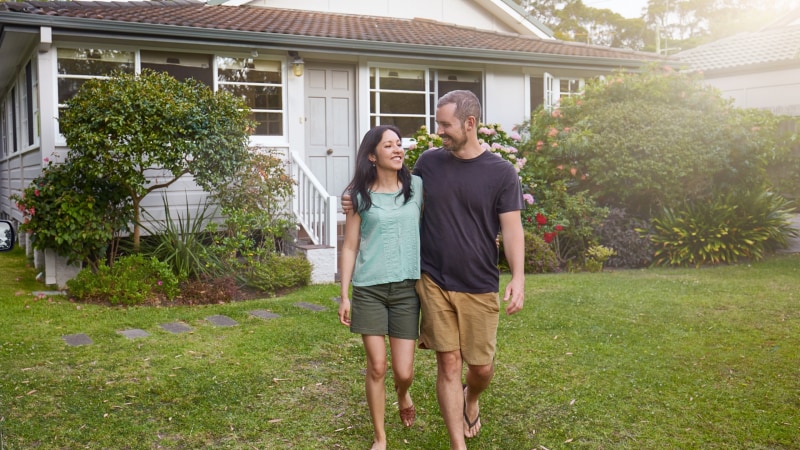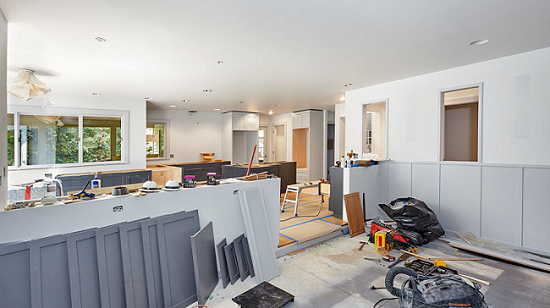Selling A House: A Step-By-Step Process

If you're like a lot of people, your home holds a special place in your heart. It's where you spend time with your family and friends, and it's probably where you feel the most relaxed and comfortable. Making the choice to sell is never easy and can seem overwhelming at times with all of the planning, negotiating and paperwork. Just like buying a home, selling is also a learning experience. We've created a step-by-step guide to on how to sell a house to help you navigate the selling journey.
Steps to selling a house
Determine how you'll sell your home
You have two options for selling your home: you can sell it on your own or with the help of a real estate agent. If you choose to sell it yourself, you'll need to decide on things like determining a listing price, showing the house, and advertising — but you'll pay less in fees to realtors allowing you to earn top dollar from the sale. If you decide to use a realtor, they'll handle the details of the transaction for a percentage of the sales price which typically totals 6%.
There isn't a right or wrong way to sell your home. Many people choose to use a real estate agent, but if you have the time and do the research, selling the home yourself can be a good alternative.
Choose a price
If you're wondering "How much can I sell my house for?" you're not alone. Choosing the right price is essential to making a timely deal. Your real estate agent can help by running a report that uses the selling price of similar homes in the area. If there aren’t any comparable homes available, your agent will use their expertise to price it accordingly. A good real estate agent will walk you through their analysis and work with you on a price point. Your home holds many memories and you know what work has been done over the years, but it’s important to be objective when setting the listing price.
If you're selling your home on your own, make sure to list the home near the market expectation. Use similar homes in your neighborhood that have sold over the last three months as a guide. You can even contact agents to ask for a list of other homes that are pending sale. When looking at these listings, pay attention to how long they’ve been on the market. This can give you an idea on how long it may take to sell your home.
After you've done your research, avoid overpricing the market. This could cause buyers to look at more affordable homes in the area and the home may lose the initial interest that comes from being the new listing on the market. You may even want to consider pricing a little lower than the market. Homes that are priced lower than the average market may result in multiple bids which can in turn raise the negotiated sales price if several buyers are competing against each other.
Prepare your house for showings
This step can take a while, so give yourself plenty of time before the first showing. You'll want to show your house in as neutral state as possible, which means painting over bright or bold wall colors, removing personal items from walls and counter tops and cleaning the home. Below are a few things to keep in mind as you're prepping your house.
Depersonalize the space
Buyers need to be able to imagine themselves living in the home which can be difficult with family pictures around the home. You'll also want to remove toys, keep dishes out of open spaces, put away laundry and even your pet's toys and food dishes. The fewer personal items the easier it is for potential buyers to picture themselves in the home.
Clean everything
Pretend that buyers are your pickiest house guests, and clean accordingly. Pay close attention to your kitchen and bathrooms, they're often under the most scrutiny. Make sure there are no signs of mold, mildew or stains in the house. You may also want to place a few air fresheners throughout the home to eliminate any odors you might not notice.
Fix the small issues
Go through your home and try to view it as a potential buyer. We get used to our own living spaces, so we may not notice things like a loose step or leaky faucet, but your buyers will. These things may seem small, but the little things add up when deciding to make an offer on a home. Think of this as your chance to take care of those home improvements that need to get done.
Spruce up the yard
The outside of the home is the first thing potential buyers will see so don't forget to take care of this area as well. Curb appeal draws potential buyers in and can be the difference between making a deal or not. Maintain your lawn, add colorful plants, fresh mulch and maintain landscaping. Remember to remove personal belongings from the yard as well.
Show your house
Open houses can be stressful for sellers. You want every part of your home to be perfect but sometimes that’s just not possible. Make a plan in advance so you'll have a guide to follow if things get chaotic and try to keep the home clean at all times for unexpected showings.
Provide alternative spaces for the kids and pets
If you have children or pets, you'll want to plan a place for them to go during the time of any showings. Check with family members or neighbors, go for a walk or a drive. If that's not possible, designate an area of the house they can stay in until it's time for the buyers to see that room then move them to a different area that's already been viewed. Typically it's expected that the seller is not home during any showings.
Keep your house tidy
Once you’ve done a thorough cleaning, do everything you can to keep it that way. It's much easier to take a few seconds to clean up after an activity than it is to rush around the house and put things away right before potential buyers arrive.
Be flexible
Showings won't always be convenient, so if you want to sell your house, you have to be flexible. It may feel uncomfortable at first to leave your home while potential buyers walk through, or to get feedback on your home, but remind yourself of the end goal. Allow buyers the freedom to fall in love with the house the way you did.
Review offers and negotiate a contract
When a buyer makes a written offer, their agent will submit it to you or your realtor. Aside from the offer price, you should also consider the following:
Seller concessions
Seller concessions are incentives that sellers offer to buyers such as paying for the home inspection, a percentage of the closing costs, covering the cost of a one-year home warranty or even paying the homeowner association fees for the first year.
Buyer's home sale contingency
Many offers are contingent upon the buyer selling their own home before purchasing yours. If you have multiple offers, one without a home sale contingency would be more competitive since you aren't relying on the buyer to sell their house.
Closing date
Buyers may sometimes ask for an extended closing date due to a job search, their contingency clause or a scheduling conflict. Delays can occur during closing, so be sure to prepare for this in case it does happen.
Cash or financing
While it doesn't happen very often, it’s possible to have a buyer who'll pay for the home with cash. This would move the closing date up significantly because they won't need to wait for a bank to provide financing. In this event, you'll likely be expected to move out quickly, so think about where you’re going to stay and where to store your belongings if you're still looking for a new home.
Accept and close
Once you accept the buyer’s offer, your house will be taken off the market. The buyers will schedule any inspections, their lender will order an appraisal and review their financing. The last step of closing is to sign the documents that transfer the home to the new owners. Any profit from the sale will be sent to you, often by wire transfer directly to your bank.
Selling a house takes time and is worth celebrating. Congratulations!



